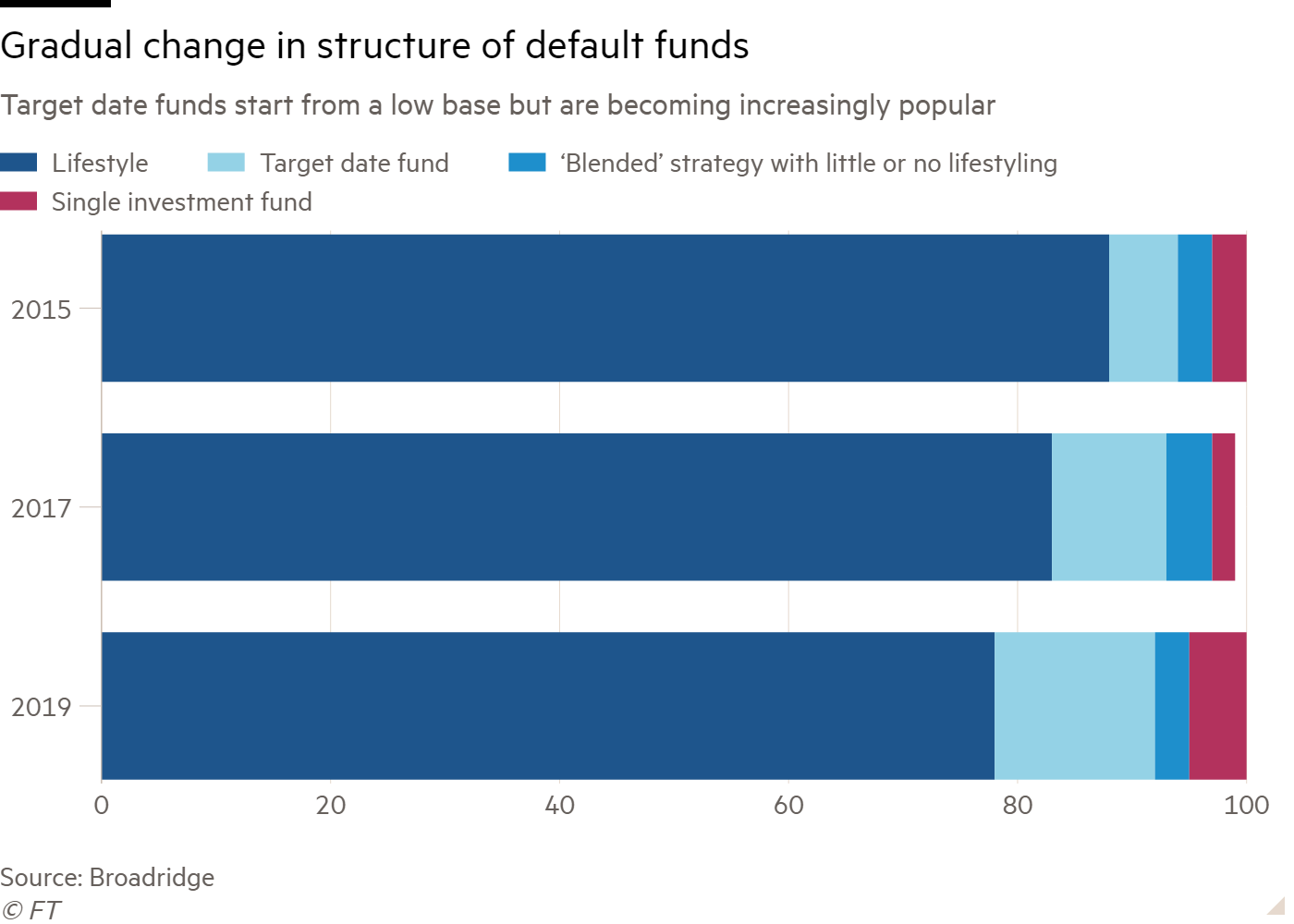Data crunch: Target date funds have seen widespread adoption in the US defined contribution market, but the UK has so far resisted change with schemes overwhelmingly using lifestyle approaches. However, an increasing proportion of schemes are gravitating towards this structure, says Broadridge Financial Solutions' Jonathan Libre.
Schemes have two main options for implementing lifecycle approaches within their defaults that derisk a member’s investments as they approach retirement. One is ‘lifestyle’, where a member’s assets gradually move from riskier funds into less risky strategies. The overall relative allocations to the different funds determine the overall investment risk level.
The second approach is to use TDFs. These are multi-asset funds issued in ‘cohorts’ (usually around five years) with maturity dates that reflect a member’s target retirement date. The asset allocation of the fund is dynamic, such that the fund itself derisks as it approaches its target end date.
Lifestyle is by far the most commonly used approach in the UK, with 78 per cent of the large schemes surveyed by Broadridge in 2019 employing this structure. Although still a small minority, the proportion of schemes using TDFs has increased significantly, from just 6 per cent of schemes surveyed in 2015 to 14 per cent in 2019.

TDFs are a broad church
TDFs appear in various guises, but have common advantages.
One key area of difference between target date offerings is whether the fund structure is ‘open architecture’ or ‘closed architecture’. Within the closed-architecture model, the fund provider will typically manage all the underlying asset classes.
Other options are ‘multi-manager’ in nature, with some customisable such that the scheme can select its own preferred managers and asset allocation. Nest has gone as far as to create its own TDFs.
TDFs offer several benefits. Firstly, they can be more flexible, for both managers and schemes. Instead of being constrained to a formulaic glidepath, managers can tactically adjust the derisking in order to capitalise on changes to the underlying risk and return characteristics of different asset classes, potentially boosting returns.
In the case of open-architecture TDFs, contract-based schemes are afforded a greater ability to adjust the components of the strategy without necessarily needing to gain member consent.
Another key consideration is that TDFs, once they have reached a certain scale, may have a greater capacity to hold illiquid assets. Since TDFs are structured as ranges of funds with different maturity cohorts, cash flows going in (through member contributions) and out (through retirement benefits payments) are highly predictable, and managers can more confidently incorporate illiquid assets within daily traded fund structures. This is likely to be increasingly important given the growing calls from the government for greater DC investment in illiquid assets.
Do not expect US-style dominance
However, several headwinds remain and it is unlikely target date will grow into the dominant model seen in the US. Some intermediaries, whether consultants or investment platforms, are reluctant to promote their use. Detractors argue that performance attribution is made more difficult due to its multi-asset fund structure; administration is compromised by the need for a separate fund for each age cohort; and in the case of closed-architecture funds, there can be a high degree of manager-specific risk.
Ultimately, when choosing between the different types of default structure, schemes should consider the costs and benefits of each approach in terms of which is most likely to deliver the best retirement outcomes for their members.
Jonathan Libre is a principal in EMEA Insights at Broadridge Financial Solutions.






















